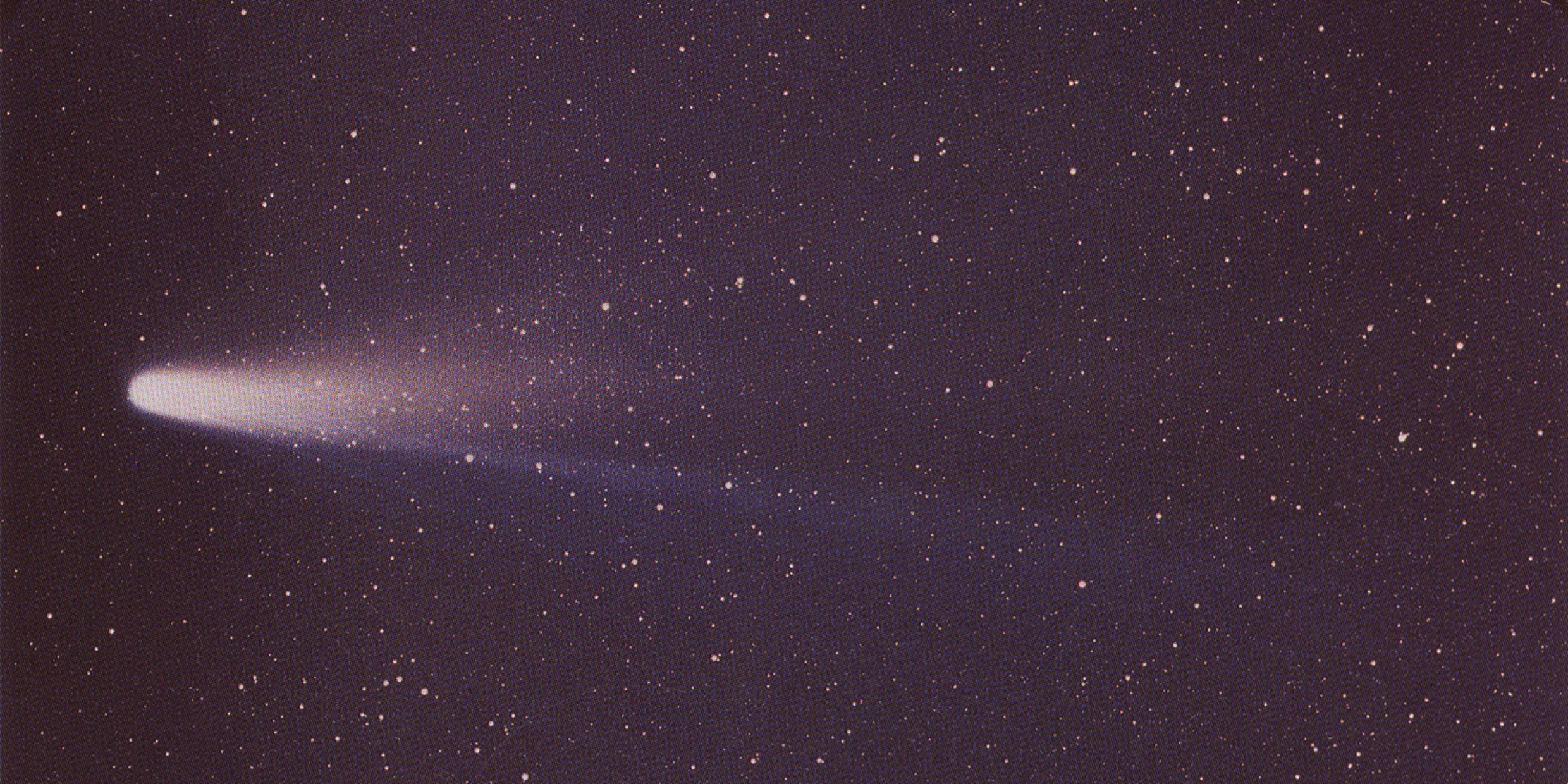Originally published 21 January 1985
This is the year of Halley’s Comet. Sometime before the last day of 1985, you and I will have the opportunity to see this most famous of all celestial visitors.
Halley’s Comet is the grand roller coaster of the Solar System. Its long, elliptical orbit takes it closer to the Sun than Venus and father out from the Sun than the orbit of Neptune. At the “top” of its cigar-shaped orbit it glides with exceeding slowness through the dusky outer reaches of the Solar System. As it turns to slide toward the Sun, it gathers speed. Faster and faster it falls, down across the orbits of the planets. At last, it whips around the Sun with “neck-snapping” velocity and begins its slowing climb back up to the top of the track.
Passing Jupiter
As 1985 begins, Halley’s Comet is hurtling past the orbit of Jupiter, inward bound, invisible to all but the largest observatory cameras, a ghostly sphere of dust, ice, and gas with still no hint of a tail. It is five times farther from the Sun than the Earth, and growing slowly brighter in reflected sunlight.
Interest in the comet is growing faster than the comet’s brightness. Posters are available. Paperbacks proliferate. Soon you will find the comet on cocktail glasses, bumper stickers, and cereal boxes.
Halley’s is the brightest of all comets with known periodic orbits. But the extraordinary interest in Halley’s Comet undoubtedly stems from the commensurability of the comet’s 76-year period with the span of a human life. An appearance of the comet is literally a “once in a lifetime” event.
The position of the Earth in its orbit at the time of the comet’s arrival will make the coming visitation one of the least spectacular in 2000 years. You will have to be resourceful to see the best the comet has to offer. There will be many guidebooks and articles that will help you anticipate and see the comet. For my money, the most useful will be Seeing Halley’s Comet by Guy Ottewell and Fred Schaaf, to be published early this year.
By late summer, amateurs with reasonable-sized telescopes will be busy searching for that first faint glimpse of the approaching comet. In October, the comet will be about twice as far from the Sun as the Earth and on a trajectory that is bringing it in our direction. If we could stop the Earth in its orbital motion and wait for the comet’s arrival, it would pass only 21 million miles from us. That is close by cosmic standards, and what a spectacle it would be! But, of course, we can’t stop. By the time the comet passes directly above the Earth’s orbit, we will have moved far away, in the opposite direction around the Sun.
Amateurs with relatively small instruments should see the comet toward the end of October. November will bring Halley’s Comet within the reach of binoculars. It will then be in the constellation Taurus, and the tail should be well-developed.
Early in December, some lucky person will be the first in three-quarters of a century to see Halley’s Comet with the naked eye. But the expected brightness of the comet in December will place it just within the limit of naked-eye viewing. City-dwellers should not expect even a glimpse without optical aid. If you want to try for a naked-eye view of the comet, take yourself far from city light on the moonless night early and late in the month.
Best in early ’86
It will not be until the early months of 1986 that Halley’s Comet will put on its best show. And then, the greatest spectacle will be reserved for observers far to the south. In April, the Earth and the comet will have made sweeps around the Sun in opposite direction, and we will have our closest encounter, catching the comet on its outbound journey. But even then, the approach will not be a particularly near one. Worse, the comet will be placed on the southern horizon for observers in Boston.
Is it worth it, then, all this excitement? You bet! I’ll be watching is September with my telescope and with binoculars in November. And I’ll be in a high, dark place early in December, when luck might let me be one of the first to see the comet with the naked eye.
No matter what the year brings, Halley’s Comet is sure to be one of nature’s most beautiful gifts.
As anticipated, the 1985 – 86 apparition of Halley’s Comet was unspectacular for most observers. As of 2019, the comet is now back beyond the orbit of Neptune. A more favorable encounter with Earth is expected upon its return in 2061. ‑Ed.



